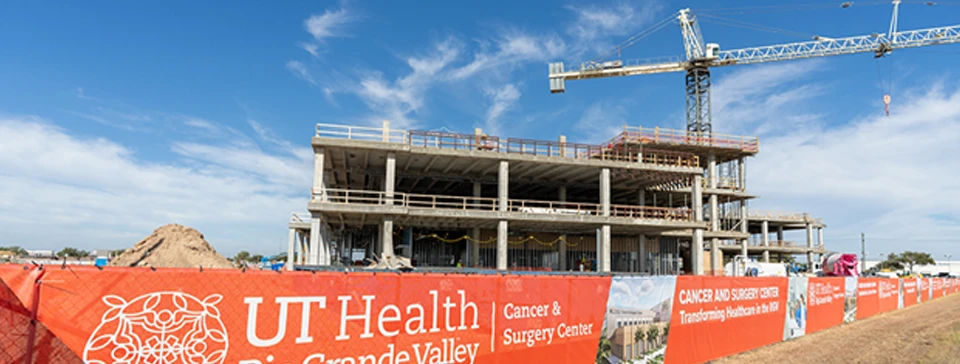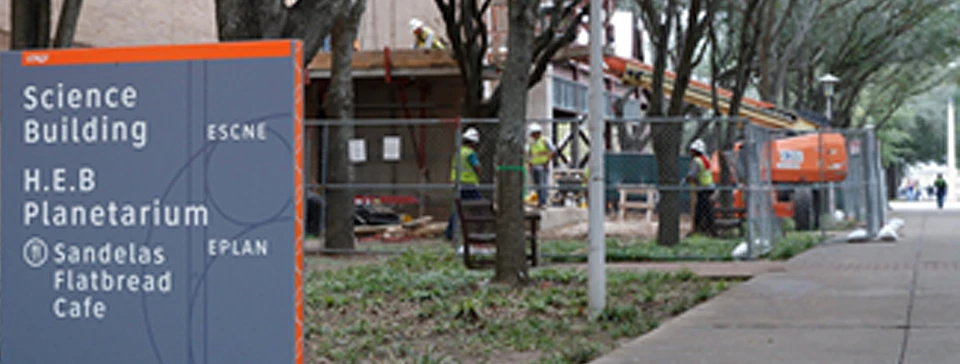Contractor Safety Program

Construction is a high-hazard industry comprising various activities involving construction, alteration, and repair. They can include falling from rooftops, unguarded machinery, being struck by heavy construction equipment, electrocutions, silica dust, asbestos, and exposure to chemicals, dust, and solvents. Conversely, there is also the risk of these hazards "spilling over" to UTRGV personnel who are in the proximity of the construction site. The UTRGV Contractor Safety Program ensures the health and safety of the university faculty, staff, students, and visitors near renovation, demolition, installation, or maintenance operations performed by contractors or subcontractors.
Every contractor and their respective sub-contractors are expected to take steps, as necessary, to protect the safety and health of University faculty, staff, students, and visitors during the performance of their work activities.
This program does not cover the legal responsibilities of contractors and subcontractors regarding their employees but only the steps necessary to protect campus community members. The primary Contractor is responsible for ensuring contractors comply with OSHA rules, regulations, and best management practices applicable to the work site and the environment.
Basic Program Elements
Project Manager Responsibilities
A UTRGV Project Manager hires and/or manages a contractor to perform maintenance, repair, installation, renovation, or construction-related operations on any UTRGV property.
The UTRGV Project Manager ensures that the Contractor is:
- Informed of the presence of hazards in or near the work area;
- Informed about UTRGV requirements identified in the Contractor Procedures Manual;
- Trained by using the online Contractor Safety Training program and
- Aware of the University's expectations regarding safety compliance and the control of worksite hazards.
Contractor Responsibilities
All contractors must comply with all rules, regulations, and best management practices applicable to the Construction Site and ensure that subcontractors do the same.
The successful Contractor shall have a written health and safety program that outlines safe work practices and procedures expected to be followed by workers and shall have it available for review by the University's project manager or by representatives of the EHSRM Department upon request. JOC contractors shall have obtained an OSHA 30-hour Construction Safety Outreach Training card within five years of the date of the applicable project. The Contractor is solely responsible for ensuring that all workers receive any required safety training. Training documentation shall be made available for review upon request.
The successful Contractor shall have a competent person or persons as defined by OSHA 29CFR1926.32(f) on the job site to monitor hazardous work activities such as, but not limited to, crane operations, electrical safety, excavations, fall protection, scaffolding, and confined space entry.

The successful Contractor shall have an up-to-date Safety Data Sheet (SDS) for all chemical products used on the job site. The SDSs shall be readily accessible to all project workers and University staff upon request. If the use of any chemical product has the potential for harmful exposure to UTRGV staff, faculty, students, or visitors, the Project Manager shall notify the EHSRM office, and exposure controls will be discussed prior to the use of that chemical product.
Outside contractors shall manage all Hazardous Substances (as herein defined) used or generated on University property in accordance with all applicable federal and state laws and the University's Hazardous Material Management Guide. A hazardous substance is any substance that is toxic, ignitable, reactive, or corrosive or that is regulated by any local government, the State of Texas, or the United States government. Hazardous Substances include but are not restricted to asbestos, polychlorobiphenyls (PCBs), and petroleum.
Routine Unannounced Inspections
UTRGV EHSRM or the UTRGV Project Manager may conduct routine unannounced inspections. These job site visits are performed solely for the benefit of the University and shall not relieve the Contractor of responsibility for enforcing and complying with OSHA regulations.
In the event that work site conditions exist that potentially impact the safety of university faculty, staff, students, and visitors, EHSRM shall inform the UTRGV Project Manager so that the workplace condition can be corrected in a timely manner. If the Contractor cannot immediately correct the unsafe conditions and represents a danger or has the potential to harm university faculty, staff, students, and visitors, then the UTRGV Project Manager will:
- Inform the Contractor of unsafe conditions observed and explain the potential impact upon university faculty, staff, students, and visitors;
- Instruct the Contractor to either stop working or implement measures to isolate the hazardous condition until the unsafe condition is mitigated and
- Issue a formal written report of the situation(s) to the Contractor.
Contractor Security Requirements
All contractors and their respective subcontractors who will be unattended on the UTRGV campuses(s) must obtain a Criminal Background Check (CBC). The procedures for obtaining this background check are included in this document. The badge fee is $12.00.
UTRGV Contractor Criminal Background Check Policy
Contractor Parking Arrangements
The Contractor should make parking arrangements with the Project Manager prior to the commencement of the construction project. In most cases, personnel will be required to purchase a parking pass to park on UTRGV campuses. Contractors who perform a significant volume of work on the campus are encouraged to purchase an annual parking pass.
UTRGV Parking and Transportation Services
UTRGV Documents
UTRGV Contractor Safety Program
UTRGV Contractor Safety Program Inspection Sheet
UTRGV Contractor Safety Expectations - Presentation
UTRGV Contractor Safety Expectations - Exam
External Links
PART 1926 – Safety and Health Regulations for Construction
PART 1910 — Occupational Safety and Health Standards
